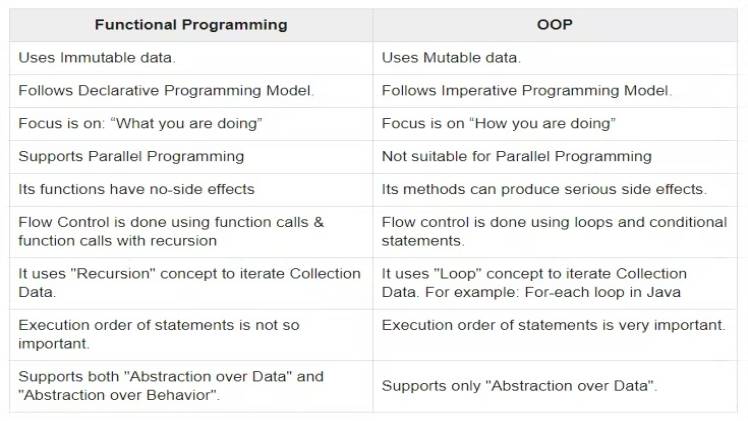Overview of Object-Oriented Programming VS. Functional Programming

Body
Programming paradigms serve as governing principles in software development, influencing how we design, structure, and solve problems in code. In particular, object-oriented programming (OOP) and functional programming (FP) stand out. FP and OOP are fundamentally different programming paradigms. Each paradigm has its own set of guiding principles, philosophies, and strengths.
In this article, we explain what each programming paradigm entails and summarize their main distinctions.
The Concept of Object-Oriented Programming
Object-oriented programming (OOP) is a programming paradigm in which the main concepts are objects and classes. The paradigm first appeared in the 1960s but was widely used only in the 1990s. With the advent of computers and computer networks, the creation of software began, which required a large number of methods for structuring programs. Object-oriented programming centers on the concept of an object. An object is an entity, an instance of a class, to which messages can be sent and which can respond to them using its data. The data of an object is hidden from the rest of the program. Hiding data is called encapsulation. The presence of encapsulation is sufficient for the objectivity of a programming language, but it does not mean that it is object-oriented, so inheritance is necessary for this.
But even the presence of encapsulation and inheritance does not make a programming language fully object-oriented from the OOP point of view. The main advantages of OOP appear only when polymorphism is implemented in the programming language, that is, the ability of objects with the same specification to have different implementations. It should be noted that it is often argued that abstraction is another important feature of OOP that should be highlighted. Officially, the concept was not included in the mandatory features of OOP, but it should not be written off.
- Abstraction is a way to isolate a set of essential features of an object, excluding the non-essential ones from consideration. Consequently, an abstraction is a collection of these characteristics.
- Encapsulation is a system property that allows you to combine data and methods that work with it in a class and hide implementation details from the user.
- Inheritance is a system property that allows you to describe a new class based on an existing one with partially or completely borrowed functionality. The class you inherit from is called the base class, parent class, or superclass. A new class is a child, heir, or derived class.
- Polymorphism is the ability of a system to use objects with the same interface, regardless of their type or basic structure.
The class is determined based on the access type and can have one of the following values:
- Public (used for any point in the program outside this class).
- Private (only for other members of this class).
- Protected (in members of this class and its derivatives).
- Internal (applies to types in the same collection).
What Should You Understand About Functional Programming?
Functional programming (FP) is a programming paradigm where programs are built by applying and arranging functions. While imperative programming emphasizes state changes and the execution of a series of instructions, functional programming emphasizes the use of functions.
The fundamental premise of functional programming is to encapsulate almost everything in functions, create a large number of reusable functions, and then call them sequentially.
Here are some of the most common functional programming languages: Haskell, Clojure, Scala, Erlang, F#, and Lisp.
Among the key elements of functional programming are the following:
- A function as a first-class object (a function can be built at runtime, passed as a parameter, returned, and even got a certain value).
- Higher-order function (can take functions as parameters and return functions as values).
- Pure function (takes and returns the same value as the input value without any data changes).
- Anonymous function (a function without a name, usually used for a short period of time).
- Recursion (allows you to write concise algorithms based on the input data to functions).
- Persistent data structure (a data structure retains its previous version during modification).
- Non-strict evaluation (evaluation of a function when it is called).
When comparing Functional and Object-oriented programming, it is always essential to consider their respective purposes. Both approaches prioritize usability, simplicity of comprehension, and rapid development. At the same time, they use a variety of data storage and manipulation techniques.
Functional software development emphasizes data and their transformations by functions, whereas object-oriented software development is based on objects and models.





